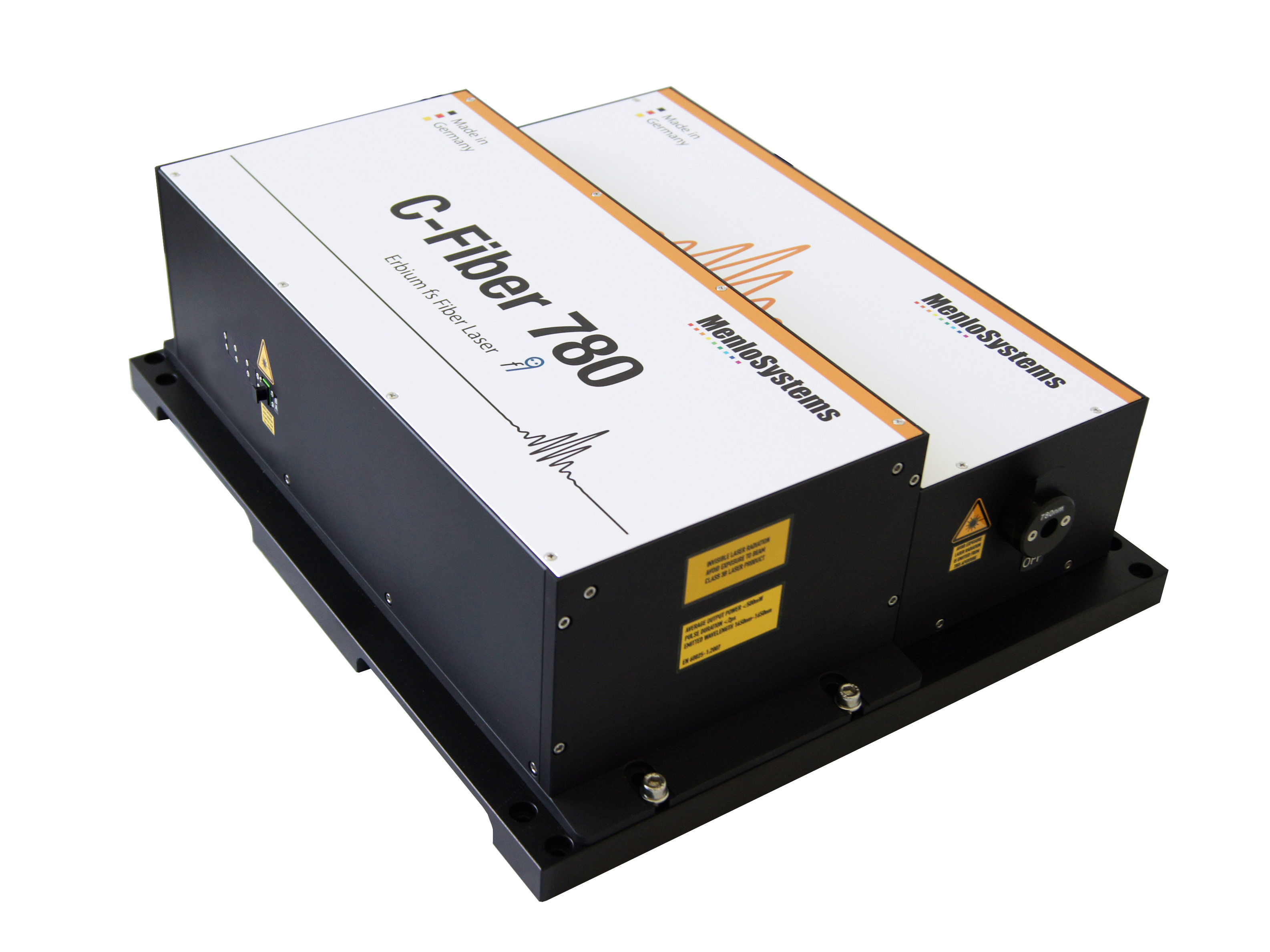Menlo Systems' product:

3D Nanoprinting under test
A team led by Sven Fritzsche at the Federal Institute for Materials Research has developed a test artifact that enables the quality assessment of femtosecond direct laser writing procedures. Menlo Systems’ C-Fiber 780 HIGH POWER femtosecond laser was used in the development of the standard.
Advances in direct laser writing by means of two-photon polymerization (2PP) or multi-photon lithography (MPL) have transformed this approach into a highly versatile manufacturing technology that can fashion miniaturized structures and building blocks with hitherto unprecedented precision. However, such intricately detailed structures must be faithfully replicated – particularly in the case of components with nanometer dimensions, where even minimal deviations from the design parameters can cause major problems. Sven Fritzsche and his colleagues at the Federal Institute for Materials Research (BAM) in Berlin, Germany, have now developed a standardized tool that can evaluate features of the structures produced by femtosecond-laser direct writing (fs-LDW), using Menlo Systems’ femtosecond laser technology.

Overview SEM image of a test artifact with highlighted features (from original publication)
Specialized components such as complex optical elements, diverse biomedical filters, and even tools for the micromanipulation of cells for artificial insemination can now be constructed with the aid of direct laser writing. This technique makes use of a pulsed laser source to shape the required element by interacting with a volume of light-sensitive coating, or ‘photoresist’. In the present case, the interaction results in the curing of the photoresist. The production of structures using two-photon lithography normally employs photopolymers as photoresist. The technique relies on ultrashort pulse characteristics of a laser, which allows for the simultaneous absorption of two identical photos at the laser focal spot within the polymer. The focal point is then moved freely in the photoresist and facilitates locally controlled curing, in accordance with the desired pattern. The dimensions of the resulting three-dimensional object reach orders of a few hundred nanometers. The spatial resolution is limited by the focal diameter, which is proportional to the laser wavelength. In effect, direct femtosecond-laser writing provides one with a 3-D printer for miniature parts.
However, in the context of industrial production, the technology also requires a set of standards for quality control. To meet this requirement, Sven Fritzsche and his team at the Federal Institute for Materials Research (BAM) in Berlin have now designed and fabricated a so-called test artifact, which allows one to evaluate the quality of structures created by a specific femtosecond laser writing process. The underlying principle of the test artifact is a set of standardized, well-defined 3D-geometrical features that enable one to monitor the effects of variations in the various process parameters.
The novel test artifact by BAM is the first of its kind. “We designed it specifically for use in the context of direct femtosecond laser writing, taking into account both the high geometrical resolution of fs-LDW features and the restricted options available for the characterization of the resulting structures,” Fritzsche explains. “The test artifact is not intended to create perfect structures. Its role is to generate reproducible defects that can then be used to optimize the fabrication process.”
The lengths, angles and distances between landmarks patterned on the test artifact are all defined in a datasheet. “When one prints an object or a miniature component, there will be deviations from these values, which can be measured with the aid of white-light interferometry, scanning electron microscopy (SEM), or light microscopy,” Fritzsche explains. “For instance, if one prints several test artifacts at the end of a production run, the structure itself should not change. However, if the laser has not been properly aligned, or other problems turn up, deviations should appear in certain areas of the test artifact,” says Fritsche. “In addition, we have validated our test artifact on diverse substrates and employed various laser energies to cure the photoresist.”
In the development of the new test artifact, Fritzsche and his colleagues employed the C-Fiber 780 HIGH POWER femtosecond laser from Menlo Systems. The system emits ultrashort light pulses with less than 100 fs duration at 780 nm wavelength and a repetition rate of 100 MHz. In addition to pulse duration and wavelength, several other parameters of the laser have a decisive influence on the quality of the prints. The C-Fiber 780 HIGH POWER laser provides the necessary high beam quality, pointing stability, and system long-term stability to reliably reproduce the features of the test artifact. In particular, the reliable repeatability of the pulse-to-pulse parameters ensures uniform curing of the illuminated areas and hence error-free results. In addition, the system offers the option of pulse pre-compression, which allows the dispersion within the optical beam delivery system of the respective application to be compensated.
“Menlo’s laser was the only laser source in our fabrication system,” Fritzsche points out, “and it was integrated into a LaserNanoFactory by the Lithuanian company Femtika. We used the Menlo laser for the polymerization process, which was controlled by Femtika’s software.”
What then are the chances that direct femtosecond laser writing will become the industry standard? “In light of the fact that the high resolution achieved by this technique is very impressive, this is certainly conceivable,” Fritzsche says. “We have also experimented with automated QR codes and unequivocal identifiers which can be generated in real time during the printing procedure. These codes were generated together with the structure itself, and we were able to read them under the light microscope. The smallest block was only three or four micrometers long,” he adds. “It should therefore be possible to identify every structure that is produced, and pinpoint the origins of any problems during the course of the production run. This should in turn lead to a significant improvement in the production process itself.”
Author: Thorsten Naeser
Original publication:
S. Fritzsche, B. R. Pauw, Ch. Weimann, and H. Sturm:
First of its kind: a test artifact for direct laser writing;
Meas. Sci. Technol. Vol. 34, p. 075004 (2023)
DOI: https://doi.org/10.1088/1361-6501/acc47a